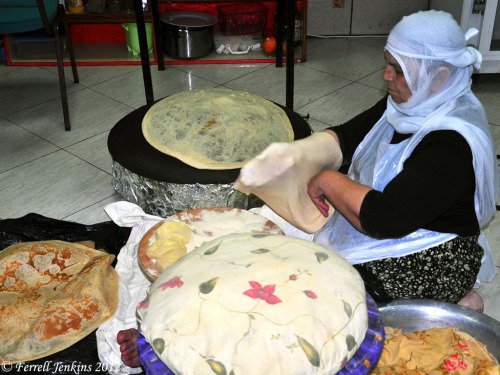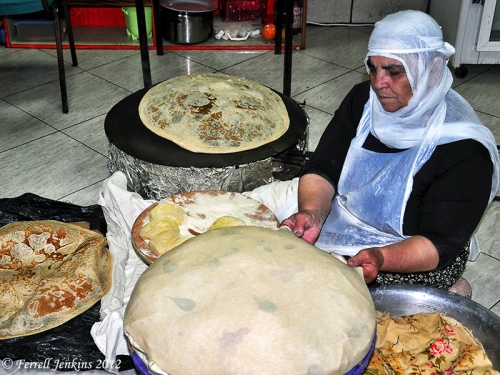Earlier this month we wrote about the significant kings of the Neo-Babylonian Empire. Here is a list of the articles in chronological order.
- Nabopolassar, father of Nebuchadnezzar, destroyed Nineveh here.
- The Kings of Babylon and Bible History here.
- Nebuchadnezzar, king of Babylon here.
- Evil-merodach (562-560) graciously freed Jehoiachin here.
- Nabonidus, the last king of Babylon here.
What about Belshazzar?
Belshazzar is called king several times in the Book of Daniel (5:1,9,30; 7:1; 8:1). He is referred to as the son of Nebuchadnezzar in Daniel 5:21-22. There may be many things we still do not know about the historical setting of Daniel, but we understand from Babylonian records that Nabonidus was the king of Babylon at this time (556–539 B.C.). How can it be said that Belshazzar is king, and how can Daniel be third in the kingdom (Daniel 5:7,16,29)?
Perhaps no book of the Old Testament has come under critical attack more than Daniel. As far back as the third century A.D. a Phoenician philosopher named Porphyry claimed the book of Daniel was written about 165 B.C. This is at the time of the oppression of Israel by the Seleucid ruler Antiochus Epiphanies. By dating the book which reports events of the 6th century B.C. to the second century, most of the prophetic elements are removed. This view has been followed by many liberal scholars. I recall learning it first from Robert H. Pfeiffer’s Introduction to the Old Testament (1941/48; pp. 748-781).
Even though information comes to light that suggests the feasibility of the biblical account, rarely do critical scholars acknowledge it.
An article by Dr. Alan R. Millard dealing with these issues appeared in Biblical Archaeology Review, May/June, 1985. At the time of this article, Millard was Rankin Senior Lecturer in Hebrew and Ancient Semitic Languages at the University of Liverpool in England. He explains the discovery of clay cylinders in southern Iraq by J. G. Taylor. Sir Henry Rawlinson was able to read the Babylonian cuneiform.
The inscriptions had been written at the command of Nabonidus, king of Babylon from 555 to 539 B.C. The king had repaired the temple tower, and the clay cylinders commemorated that fact. The inscriptions proved that the ruined tower was the temple of the city of Ur. The words were a prayer for the long life and good health of Nabonidus—and for his eldest son. The name of that son, clearly written, was Belshazzar!
Millard explains the significance of this discovery:
Here was clear proof that an important person named Belshazzar lived in Babylon during the last years of the city’s independence. So Belshazzar was not an entirely imaginary figure. This prayer, however, speaks of Belshazzar only as the king’s eldest son, not as king.
Professor Millar asks, “What, exactly, was Belshazzar’s position?”
Since 1854 several more Babylonian documents have been unearthed that mention Belshazzar. In every case, however, he is the king’s son or the crown prince; he is never given the title “king” in Babylonian. Although most scholars now admit that the author of the Book of Daniel did not invent Belshazzar, they still assert that, nevertheless, the Biblical author made a major mistake in referring to him as king.
Yet even that may not be quite right. In legal deeds from the sixth century B.C. the parties swear oaths by the gods and the king, according to a well-known and longstanding practice. In some of these deeds from the reign of Nabonidus, we find that the parties swear by Nabonidus and by Belshazzar, the king’s son. This formula, swearing by the king and his son, is unattested in any other reign in any documents yet uncovered. This suggests that Belshazzar may have had a special status. We know that during part of his father’s reign, Belshazzar was the effective authority in Babylon. The Babylonian texts reveal that Nabonidus was an eccentric ruler. While he did not ignore the gods of Babylon, he did not treat them in the approved way, and gave very considerable attention to the moon god at two other cities, Ur and Harran. For several years of his reign, Nabonidus did not even live in Babylon; instead he stayed at the distant oasis of Teima in northern Arabia. During that time, Belshazzar ruled in Babylon. According to one account, Nabonidus “entrusted the kingship” to Belshazzar. — BAR 11:03 (May/June 1985).
The small cuneiform foundation cylinder shown below, now in the British Museum, ends with a prayer in the name of Nabonidus and his son, Belshazzar.

Clay foundation cylinder naming Nabonidus and Belshazzar. British Museum ME 91128. Photo by Ferrell Jenkins.
Fant & Reddish provide this translation of the significant portion:
“As for me, Nabonidus, king of Babylon, save me from sinning against your great godhead and grant me as a present a life of long days, and as for Belshazzar, the eldest son my offspring, instill reverence for your great godhead (in) his heart and may he not commit any cultic mistake, may he be sated with a life of plenitude” (Lost Treasures of the Bible, 233).
Belshazzar was already second in the kingdom, serving as a co-regent with his absent father. He could offer Daniel nothing greater than “third ruler in the kingdom.”
A 1977 article by Millard, published in Evangelical Quarterly 49:2 (April-June 1977), is available on the BiblicalStudies.org.uk website here.
Numerous scholars have sought a harmony between the Babylonian and Biblical records in their introductory surveys and commentaries. These works should not be overlooked.














You must be logged in to post a comment.